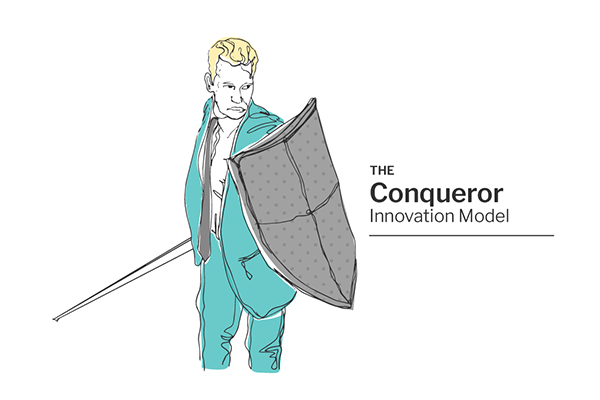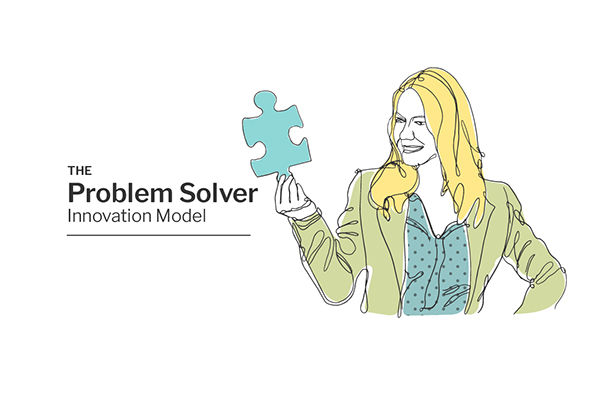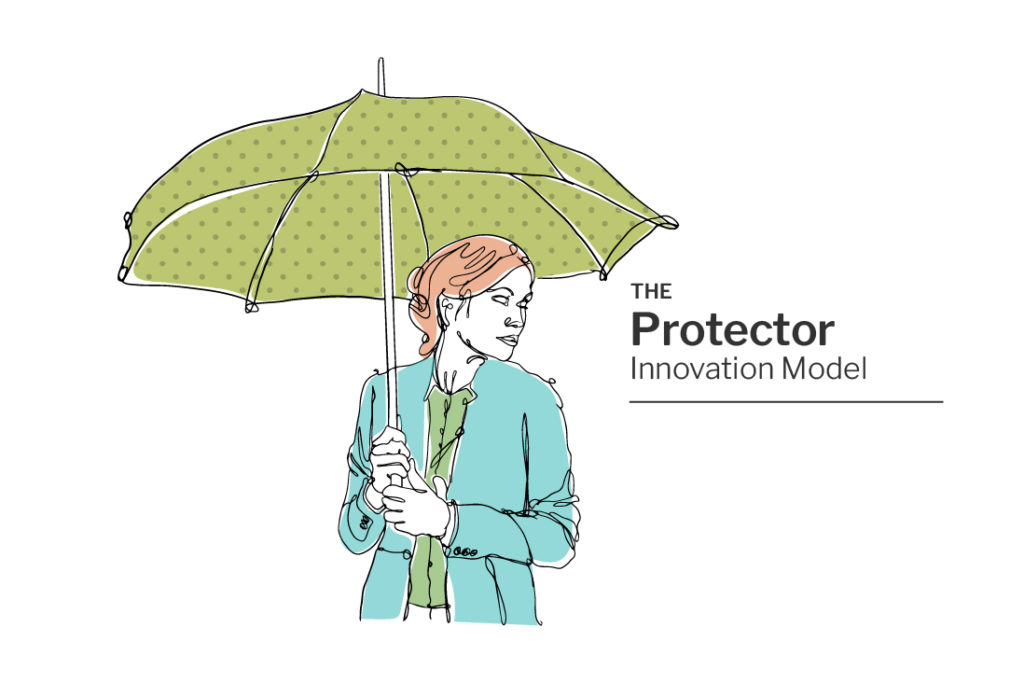5 Business Innovation Models: Identifying the Right Innovation Strategy for You.
Choosing the right Innovation Strategy to pursue is essential for any business looking to create new value, drive success, and remain competitive in the marketplace. Through Innovation, organizations can challenge and improve existing business models, anticipate customer needs before the competition does, identify new products and service opportunities, and stay ahead of the competition with unique experiences. Innovation is paramount for any business looking to succeed long-term and create sustainable growth. So, why is it so hard to build and maintain the capacity to innovate?
While there is no single, commonly cited root cause for failing to innovate consistently. An organization’s deficiency in creating, articulating, and documenting its innovation strategy contributes significantly to a diminished capacity to innovate. The reason is not simply a failure to execute but a failure to align innovation efforts with an organization’s purpose and business strategy. Left unchecked, Innovation can become a clutch of methods, tools, and the latest trends in management thinking with no clear plan and a host of conflicting priorities—even if there’s a clear business strategy in place.
Why do you need an Innovation Strategy?
An Innovation Strategy helps organizations identify and focus on innovation opportunities that support their business objectives. It is a process of determining the best approach for Innovation by holistically considering the organization’s resources, capabilities, competitive advantages, and customer needs. An innovation strategy outlines the activities to pursue to maximize the returns from a company’s innovation efforts.
When it comes to developing an innovation strategy, there are three key steps involved:
STEP 1: Define Your Business Objectives
First, you must define your business objectives and how you plan to achieve them. This includes deciding which areas of Innovation could benefit your business the most and determining how to implement each in terms of organizational structure, processes, technology, etc. It also requires considering the potential risks associated with implementing the innovation activities.
STEP 2: Develop Your Innovation Process
Next, you need to develop the innovation process that your organization will adopt. This includes deciding what tools and techniques will be used for ideation, how ideas will be tested and evaluated, and how to monitor the innovation activities over time. It also involves setting up the systems for innovation management, such as budgets, resource allocation, team structures, project planning, and milestones.
STEP 3: Choose the Right Innovation Model
Finally, it is essential to consider what kind of innovation model would best suit your business objectives. This could include open innovation strategies involving external partners or in-house processes that keep innovation activities internalized within the company’s own four walls. Other considerations might include whether you want to focus on short-term gains or long-term sustainability or adopt a hybrid approach to your innovation efforts.
What Is An Innovation Model?
An innovation model is a conceptual framework used to assess and guide the innovation process. It provides context for innovation initiatives, helping organizations make decisions that lead to successful innovation outcomes and maximizing the potential of their innovation efforts.
It’s important to understand that no single innovation model is necessarily the right one for your company; the context of your business and what you’re hoping to achieve with Innovation should drive which approach is best. For example, a Protector Innovation Model might be suitable if you want incremental improvements to an existing product or service. On the other hand, if you are trying to disrupt an industry or shift into a new market, then an Inventor or Conqueror Innovation Model would likely be more appropriate.
The key is knowing when different innovation models should be used and how they can work together to create maximum impact for your product development efforts.
The 5 Business Innovation Models
1) The Trend Follower
Being one step ahead of the competition and keeping up with rapid changes in the market is easy when you employ a Trend Follower Innovation Model. This growth strategy requires monitoring current and emerging trends to recognize potential opportunities that you can turn into innovative products, services, or business models. A Trend Follower Innovation Model allows you to capitalize on new developments quickly and keeps your organization relevant in an ever-evolving landscape.
2) The Conqueror
The Conqueror Model of Innovation is an organizational concept that outlines how innovative products and technologies disrupt existing industries. This model divides into three categories: the “Conqueror,” the “Defender,” and the “Annexor.” By presenting a new industry value proposition at lower cost or better performance, new products or services storm in to upset pre-existing players during the Conqueror stage. As established entities attempt to protect their marketplace presence by imitating or refining their value propositions to meet the new emerging expectations of the customer base, they assimilate into what we call ‘the Defender’ phase. As the Annexor phase proceeds, market consolidation occurs as the new product or technology develops into an impressive leader, and any remaining companies either get acquired or cease operations.
3) The Problem Solver
The Problem Solver Innovation Model identifies pain points and problems in a customer segment and solves them through systemized creativity. It is perfect for generating organic growth through new product development, design thinking, and other revolutionary processes and disruptive innovation efforts. It stresses the significance of pinpointing a latent need or area of sacrifice stakeholders have with a product or service, accumulating data and facts, and creating compelling new value propositions to capture the opportunity. Then, generating ideas and concepts to deliver the new value created. And validating them as part of the innovation process before launching them into the market.
4) The Protector Model
Companies that adopt a protector-type approach are focused on preserving their foothold in their industry by continually monitoring for potentially disruptive innovations and eliminating threats through partnerships or acquisitions. Industries that favor this innovation management tactic have a slower turnover of their customer base and its products and services. Insurance, pharmaceutical companies, and luxury brands typically employ the protector model, relying on their long-established brand reputations to repel new market entrants.
This model relies heavily on reputation and customer trust to succeed. Organizations adopting this innovation model stay ahead of their competitors by making incremental yet significant enhancements to their already established products and services while consistently tracking industry trends and potentially disruptive forces to their core business.
5) The Inventor Model
When people hear the word “innovation,” many will think about companies that have positioned themselves as innovators, like Apple, Amazon, or Microsoft. There’s an age-old myth when it comes to the notion of Innovation: that of the lone inventor sitting in his lab, hit by a bolt of lightning and a moment of explosive inspiration, and BOOM…out pops the big idea. At least, that’s how the story is typically told. There is some truth to this: for an inventor model to flourish in an organization, it often takes a visionary to set the enabling conditions to pave the way for this to happen—think of celebrated entrepreneurs like Steve Jobs or Elon Musk. But, in truth, it takes a highly talented team operating in a culture that is prepared to fail fast and often to develop disruptive Innovation. These charismatic visionaries and their companies ensure everyone knows their bold ideas, driving them toward revolutionary projects. Inventors are disruptive. Not only do they seek to improve current products, but they also look for game-changing advancements. Thus, their goods and services can cause a shift in the industry that is unlike anything else. But due to this high-stakes growth strategy, many of their inventions are subject to criticism. For example, when Apple first announced the iPhone, it was met with skepticism–now we recognize its revolutionary impact.
Which Innovation Model is the Correct Model for Your Company?
Finding the ideal innovation model for your business depends on various conditions, such as objectives, resources, and industry. To assist you in selecting an appropriate innovation model that suits your needs best, here are some practical tips to bear in mind:
– Align the model with the company’s goals: Selecting an appropriate innovation model can be paramount depending on the desired outcome. A problem-solving approach may prove ideal if your goal is to refine existing products or procedures. On the other hand, seeking disruption and market creation requires a conqueror thinking style.
– Consider the company’s resources: When it comes to innovation insight, the resources needed may vary depending on your model. For instance, problem-solving models require thorough research and in-depth analysis, which can be quite a resource-intensive endeavor. On the other hand, if you go for a lean startup approach that focuses mainly on rapid prototyping and testing, it will prove more cost-effective with its efficient use of resources.
– Consider the industry and market: Different industries and markets possess various features that can help or hinder the successful application of various innovation models. For instance, if an industry is heavily regulated, it might pose more obstacles to entry, making a conqueror model far trickier to execute.
– Tailor the model to the company’s culture and capabilities: When deciding on the best innovation model for your business, it is essential to assess the company’s culture and capabilities. Selecting a model that corresponds with your corporate values and capitalizes on existing strengths while addressing any weaknesses will ensure success in achieving innovative goals.
– Be open to experimentation: To ensure that your company’s innovation models are genuinely effective, it is critical to be able to adjust and customize them based on the organization’s specific needs. Experimenting with different approaches will help you determine which model works best for you; by closely monitoring results and evaluating performance regularly, you can find the ideal solution for sustaining success over time.
The company must select an innovation model that synchronizes with its vision, purpose, target market, and culture while being flexible enough to be tailored to its own needs.
How do You Implement an Innovation Strategy?
Companies must take a calculated and comprehensive approach to growth strategy to introduce an innovation model. To help, here are some steps for successful integration:
– Communicate the model to the organization: Thoroughly explain the chosen innovation model and its objectives to all partners, employees, and stakeholders in the innovation system. Lay out what is expected from each participant to succeed ultimately.
– Assign ownership and responsibilities: Allocate authority and tasks for executing the innovation model to particular people or teams inside the business.
– Create a roadmap: Strategize a pathway to execute the innovation model effectively and efficiently, including critical milestones along the way.
– Establish metrics and KPIs: Identify and measure success using metrics and key performance indicators (KPIs).
– Develop a culture of Innovation: Nurture a climate of Innovation throughout the organization by fostering creativity, taking risks, and testing new ideas.
– Provide training and resources: Equip employees with the proper training and resources to execute the innovation model effectively.
– Continuously monitor and evaluate: To ensure the innovation model is performing optimally, consistently assess its performance and make necessary adjustments.
– Reward and recognize: Show your gratitude and appreciation to staff members who have contributed significantly to the success of this revolutionary approach.
To ensure the success of any innovation model, it’s essential to foster a workplace culture that encourages all staff members to invest proactively in its development. It’s also crucial to evaluate and continually adjust the growth strategy according to an organization’s specific cultural attributes and resources.
Develop a Successful Innovation Strategy and Model with THRIVE.
At THRIVE, our team helps executives, leaders, and their companies develop innovative products and services while also creating cultures of innovation-driven leadership and confidence.
If you are interested in working with THRIVE to determine the proper innovation strategy and innovation model for your company, contact us HERE.
____________________________________________________________
People Also Ask These Questions About Innovation Models
Q: What are the different types of innovation models?
A: There are a variety of innovation models. For example, closed innovation relies on internal R&D, while open innovation integrates internal and external ideas. Disruptive innovation creates new markets through simpler alternatives. Incremental innovation improves existing products, focusing on efficiency. Radical innovation introduces entirely new products, often opening new markets. Architectural innovation rearranges product components to leverage existing technologies. However, each model can be leveraged for distinct purposes.
Q: How do I choose the right innovation model for my company?
A: Choosing the right innovation model for your company involves evaluating its unique needs, goals, and market environment. Assess internal capabilities and industry dynamics and align the model with the company’s culture and objectives for long-term growth and competitiveness. For instance, open or disruptive innovative business models may be preferable in rapidly changing industries. If incremental improvements are essential, an incremental innovation model could be best. The choice should consider internal capabilities, market demands, and strategic fit.
Q: What is the importance of innovation models in business success?
A: Innovation models are crucial for business success, providing frameworks to introduce new products or services. Innovative business models help companies identify, develop, and implement ideas, keeping them competitive in dynamic markets. By adopting an innovation model, businesses manage resources, promote continuous improvement, and align efforts with strategic goals. This strategic innovation approach meets current demands, anticipates trends, and drives long-term growth, maintaining a competitive edge.
Q: Can you explain the evolution of innovation models?
A: The evolution of innovation models reflects changes in business and technology. Initially, the focus was on closed innovation, where companies relied on internal R&D. As markets became more dynamic, open innovation emerged, emphasizing collaboration and external ideas. Disruptive innovation created new markets, while incremental and radical innovation focused on improvements and new products. Architectural innovation reconfigured existing components in novel ways. This transition signifies a shift from rigid strategies to collaborative approaches that value external contributions and adapt to rapid market changes.
Q: What are the steps involved in the innovation process?
A: The innovation process involves several key steps: idea generation, idea screening, concept development and testing, business analysis, product development, market testing, and commercialization. This structured approach ensures innovations are aligned, tested, and ready for market launch.
Q: How do small companies approach innovation models differently from large companies?
A: Small companies innovate with agility and openness due to size and resource constraints, favoring open innovation models. They pivot quickly in response to feedback and market changes. Large companies invested in closed innovation recognize the benefits of open innovation to stay competitive. Agility, resources, and knowledge sharing influence approach differences.
Q: What are some examples of companies successfully applying different innovation models?
A: Companies like Procter & Gamble, Netflix, and Toyota have applied various innovation models successfully. Procter & Gamble’s “Connect + Develop” program exemplifies open innovation. Netflix disrupted entertainment with a streaming service model. Toyota demonstrates incremental innovation through continuous improvements.
Q: What challenges and mistakes should be avoided when implementing an innovation model?
A: Challenges in implementing innovation models include misalignment with business goals, insufficient resource investment, resistance to change, a lack of a supportive culture, and neglecting market needs and customer feedback. Avoiding these pitfalls requires strategic planning, resourcing, and fostering an innovative culture.













